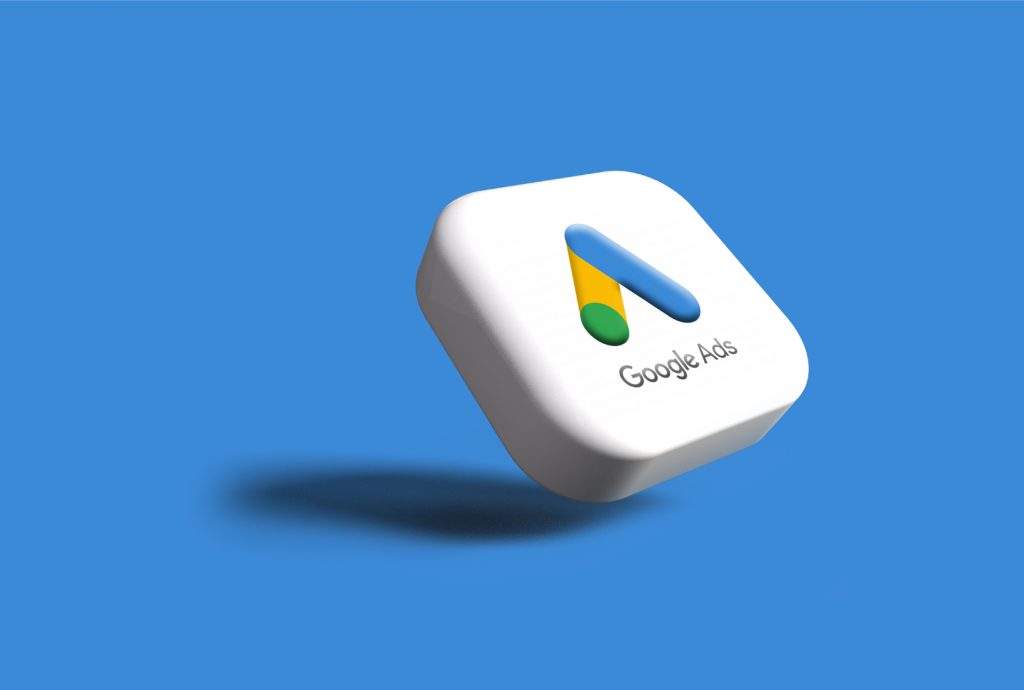REACH YOUR AUDIENCE WITH GOOGLE AD CAMPAIGNS
If you’re looking for ways to reach your target audience, a great place to start would be on the platform that reaches 2.9 billion people monthly with 5 billion daily interactions. This platform is called Google, and they’ve created Google Ads. A Google Ad cannot go unseen, and Google has made sure of this since they are the ones who developed it.
This advertising platform displays your ad to potential customers who have an interest in the product or service that you offer. Getting a Google Ad involves bidding on search terms or keywords, and the highest bidder is awarded the spot on the top of the search results. Everyone who has ever used Google can recall seeing the stand-out top search results that appear with a denotation of “Ad”. However, Google Ads also appear displayed on non-search websites, mobile apps and videos. Where your advertisement will be displayed depends on the type of ad campaign you choose to run. There are five different ad campaigns available with Google Ads; Search, Display, Video, App and Shopping. So which one best suits you?
1. Search Ads
Search Ads are the results that appear at the top of Google’s results pages. They display your advertisement with text, a congruent title, and a link for users to click which will take them directly to your page. So, if a user searches for a dentist, with search ads your ad will be displayed at the top of the results distinct from all the other results. An advantage of search ad campaigns is that your advertisement is displayed the same way as all other information on Google, so users know they have to click to receive the results.
2. Responsive Search Ads
Responsive ads, think of it as having multiple chances to collaborate with Google to create the most effective ad. This type of search ad allows you to enter various versions of headlines and ad copy so that Google can choose the ones that perform best to show to users. Traditional ads, in comparison, only allow you to have one static version of your ad, so the same headline and description appears each time. Responsive ads- true to their name, solicit a response from your target audience as it’s a dynamic ad that auto-tests your versions until it arrives at the best choice for an ad. Arriving at the best-performing ad means that this is the ad that will receive the most clicks from users.

3. Display Ads
Display ads show up on something called the “Google Display Network”. They are visually engaging ads that reach a plethora of people who browse millions of websites. Display ads benefit both the advertiser and the website owner where the ad is being displayed. The website owner is paid for every click or impression on the ad, and the advertiser receives eyeballs from their target audience. Display ads are made visually engaging so that the website visitor cannot help but notice and pay attention to what’s being offered.
4. Video Ads
A picture is worth a thousand words, and a video is worth a million – according to the owner of Majestic Heli Ski. Youtube Ads allow you to reach customers who are watching videos relevant to the product or service you are offering. Google crunches this data to send your message to the right person, at the right moment. A few seconds of your ad is displayed during the video, and you’ve had enough time to grab a potential customer’s undisrupted attention!

5. App Ads
If you want your app installed or a specific action taken with it- Google App Campaigns promote your ad on Google Search Network, Youtube, Google Play etc. Your mobile application appears in front of your target audience once you provide Google with the information about your app, your audience, and you place a bid. Google matches your app’s search terms or categories to the searches done by users. This way you get your app in front of your target audience!
6. Shopping Ads
Lastly, shopping ads have a separate section on Google’s search engine. They’re displayed on SERPS and come with product imagery and a detailed product description, including price. Your shopping ad looks like it’s a part of a catalogue section on Google as specific products are prompted rather than your whole brand. For example, if a user is looking for a “pink umbrella”, the pink umbrella you offer will pop up, even though those umbrellas are available in various colours. Any keywords the user searches for will match up with its relevant shopping ad.
Now that you know about the five campaign types on Google Ads it’s time to select which one is best for you! Whatever you choose, anything displayed on the world’s number one search engine will help you reach your desired audience. Contact us today to get your Google Ad campaign up and running!

